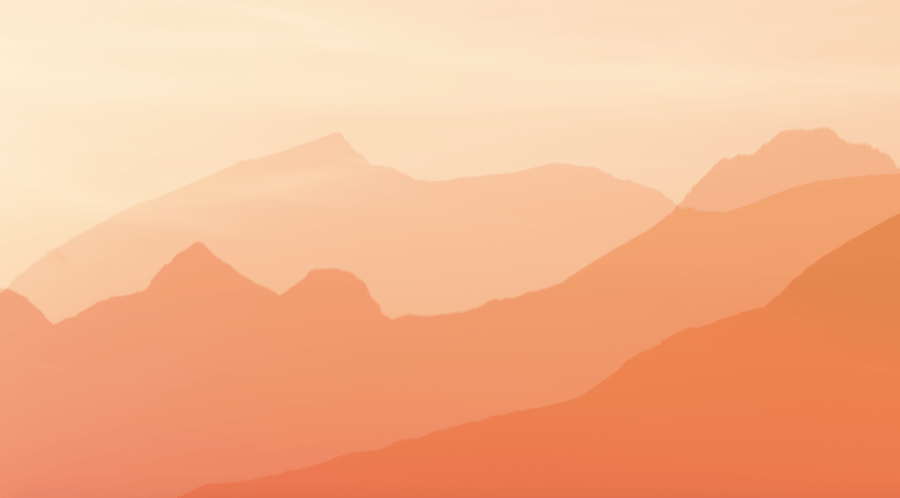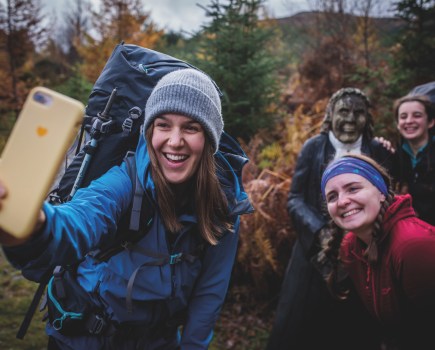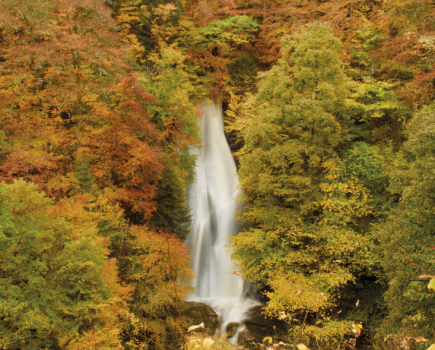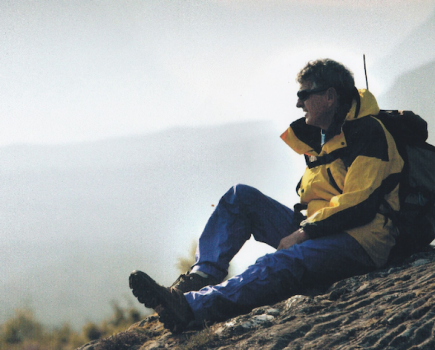Justine Ritchie’s abstract photography was the ‘In the Frame’ feature in the June issue of TGO. Here’s an extended version of Justine’s interview that dives deeper into her unique style and techniques.
When it comes to mountain photography, we are often bombarded with details – it can be difficult to determine just where to look or know what, exactly, draws your eye. Justine Ritchie’s alternative abstract approach strips the hills down and reminds us of their essence.
In the case of the featured image (Rùm Cuillin as seen from the shores of Eigg), Multiple Exposure helped Justine achieve that goal. “My abstract, Multiple Exposure images are composed intuitively by eye,” Justine explains. “Finding my subject, I let my eye guide me, exploring the landscape through my viewfinder, locking into the flow of what is a very intuitive, meditative process where my way of seeing is ultimately shaped by that all-important connection to the landscape. This is how the featured image was created.”
Multiple Exposure is a technique that involves layering two or more exposures onto a single image – it can often create a sense of movement, which is quite the contrast to the usually stark and still mountains. Justine also favours the technique to add depth and capture more than just an image. “There have been times when I have been so overwhelmed by a landscape that I’ve had to put my camera down believing that I simply can’t do it justice. However, this is where I realised that ME images can help capture more of an intimidating landscape’s complexity by integrating and reconciling the differing elements like light, colour, contours, textures, mood and moment, revealing elements that distinguish its unique spirit of place.
“I’d seen some multiple exposure images and then discovered the ME function on my now very battered but equally resilient Canon 6D camera which allows me to take up to 9 exposures in one frame and took it from there – again spending countless hours experimenting out in the field discovering what worked and what didn’t – learning how to overlay the shots by eye and create more abstract images that evoked what I felt to be a location’s true spirit of place.
“I’m a pretty unconventional landscape photographer in terms of the set-up I use. I have a minimal amount of kit and rarely use a tripod preferring instead to use my camera handheld; I feel far more connected to the landscape or my subject that way. I like to feel unencumbered when out exploring and, with my camera in my hand, it becomes an extension of me as opposed to a separate entity. My set-up and composition is therefore dictated by the environment I have chosen to explore and what draws my eye.”
Bewitched by the Rùm Cuillin as seen from the shores of Eigg, Justine aims to embody the spirit of Rùm in the featured Multiple Exposure image. “This is a scene of layered light and receding ridge lines, but it is also an illustration of the geology and history that has been folded into those layers. Rùm is an island steeped in myth and legend – it’s a geological Mecca and the core of a deeply eroded volcano; a place where Vikings settled and seabirds burrow, a place once held by clans and later cleared of its population, and I’d like to think this scene embodies much of that.”
Intentional Camera Movement

‘Silence’ – Cairngorms by Justine Ritchie
Justine also practices the Intentional Camera Movement technique in her photography, demonstrated in the photo above. It’s typically a style used to create an abstract effect, and involves deliberately moving your camera over a long exposure. “When shooting ICM images, I take into account the light, colours, patterns, textures, contours, and often spend hours observing how the elements shape, nurture, erode and embrace the landscape,” Justine explains. “Time becomes irrelevant and I can enter an almost trance-like state as I lift my camera to my eye and begin to capture not only what I see but also what I feel.
“I pretty much stumbled across the technique of ICM before I even realised there was such as thing called Intentional Camera Movement. I’d gone out to shoot some seascapes but then moved my camera as my finger was resting on (and accidentally depressed) the shutter button…but I liked the abstract result of the colours of the sand, sea and sky.
“When I realised this was a specific technique I looked at the work of others known for their expertise in this field of photography such as Valda Bailey and Doug Chinnery but was also keen to develop my own style so spent hours out in the wilds experimenting. Creating ICM images relies on setting a longer exposure but more than that it requires tuning into the landscape and the elements; observing for example which way the wind is blowing, registering the speed, direction and rhythm of the waves, noticing the patterns and textures on the ground and learning to move the camera in a way that is sensitive to the landscape’s natural patterns and rhythms, contours and colours.”
Justine adds, “If anyone is interested in learning about these techniques, I will be launching a series of mindful photography workshops post lockdown (based in the Highlands and Islands) that include sessions on these two techniques to create more abstract landscape interpretations. The details will be on my website in the not too distant future.”
See more of Justine’s work on her website: justineritchie.com
You can also find Justine on Instagram, Twitter and Facebook.
Photography: Justine Ritchie







